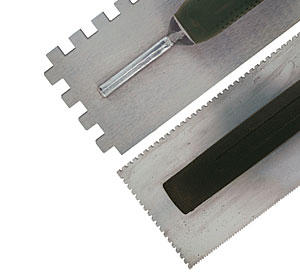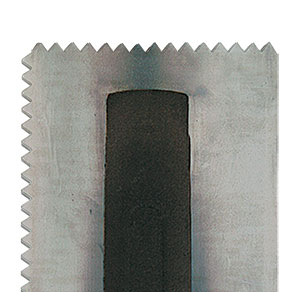Trowels for Tile: Square-Notch, U-Notch, or V-Notch?
Select the trowel based on the size of the tile being used and the substrate material.
The notches in these trowels determine how much tile-setting compound is distributed over a substrate. They also increase the quality of a tile’s bond by eliminating voids in the compound that can lead to tile failure.
A lot of folks think that trowel choice is simply based on the type of tile-setting compound being used. However, a proper trowel should be selected based primarily on the size of the tile being used and the substrate material rather than by the type of tile-setting compound.
Square- and U-notch: different shapes, but equally versatile

Although they’re slightly different in shape, square- and U-notch trowels perform the same. They’re best used when installing tile with mastic or thinset over rough material like cementboard. However, these trowels should be used with mastic only when the specified notch depth is less than 1/4 in.
Weakness: These trowels can disperse a large amount of material. Using a trowel with oversize notches, however, can lead to excess material in the grout joints that will need to be cleaned out.
Cost: $10 to $15
V-notch: best used with small tiles on smooth substrates

V-notch trowels disperse only a small amount of compound, which makes them ideal for applying tiles smaller than 6 in. by 6 in. on smooth surfaces like drywall. These trowels are also good for applying flooring adhesives.
Weakness: The notches in these trowels don’t spread thinset well because of its sand aggregate. They also don’t leave behind enough material to embed large tiles or tiles with textured backs properly.
Cost: $8 to $14
Photos by: Krysta S. Doerfler





